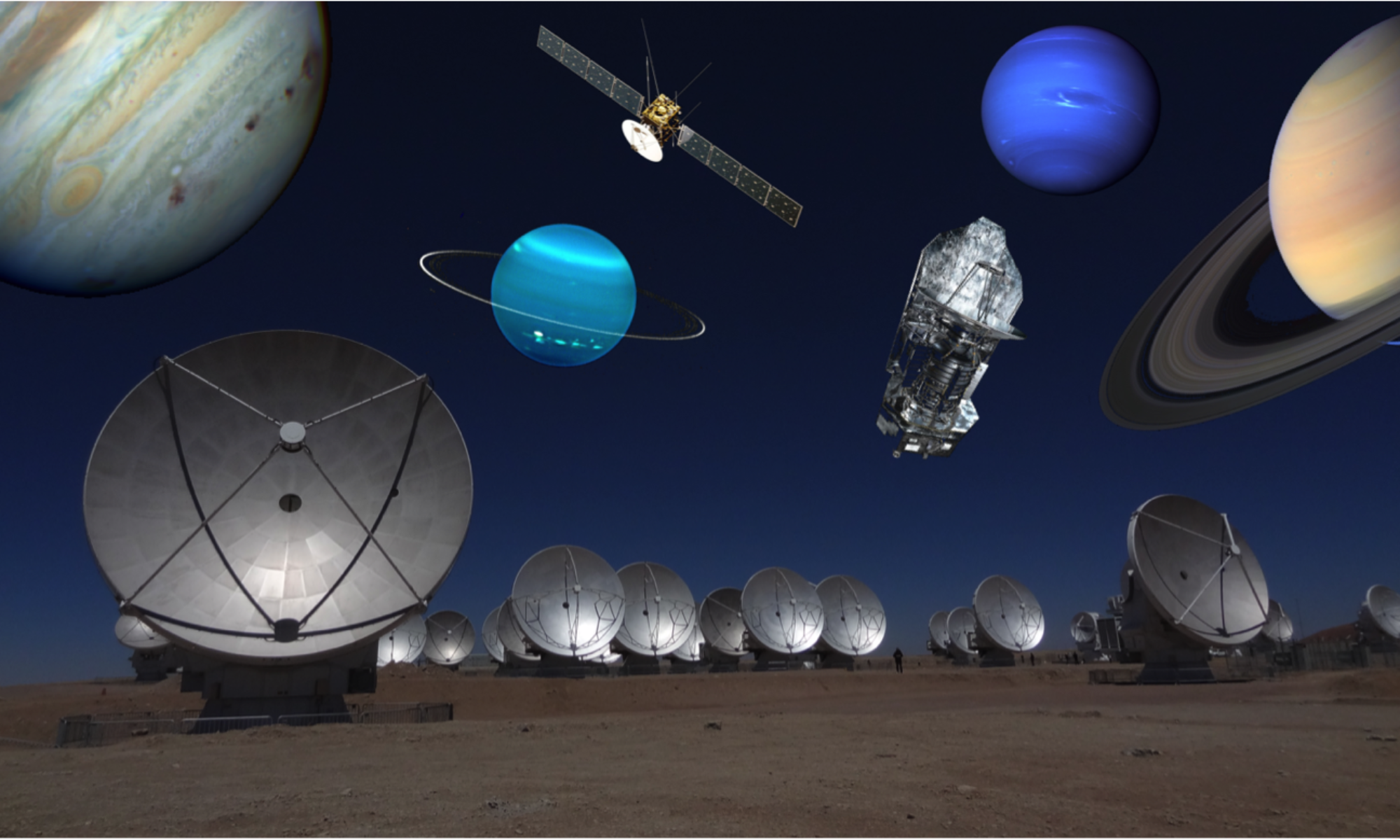A major discovery of the Infrared Space Observatory (ISO) was the detection of water vapor in the stratospheres of the giant planets and Titan (Feuchtgruber et al. 1997, Coustenis et al. 1998). It implies the existence of external sources of oxygen, as water condenses at the tropopauses of these planets and can therefore not come from their tropospheres.
This supply of oxygen material that manifests itself not only through water, but also carbon monoxide and carbon dioxide, has several possible sources:
- Interplanetary dust particles (IDP) produced by collisions of asteroids and by the activity of comets (Prather 1978, Landgraf et al. 2002)
- Icy rings and satellites (Strobel and Yung 1979, Prangé et al. 2006)
- Impact of Shoemaker-Levy 9 (SL9) type comets (Lellouch et al. 1995).
It is important to assess the relative magnitude of each of these sources to better understand the production of dust at high heliocentric distances (Kidger et al. 2003, Moses and Poppe 2017), the ionisation and/or transport of solid and gaseous material from rings and satellites to the upper atmospheres (Connerney 1986, Cassidy and Johnson 2010, Moore et al. 2015), and the frequency of comet impacts in the outer Solar System (Zahnle et al. 2003).
With Herschel, Odin and the JCMT, I have obtained new evidence regarding the origin of oxygen species in the stratospheres of giant planets.
Relevant posts:
The cometary water of Jupiter
An external source of CO for Uranus
Detection of a water torus around Saturn at the orbital distance of Enceladus
Is carbon monoxide of cometary origin in Saturn?
